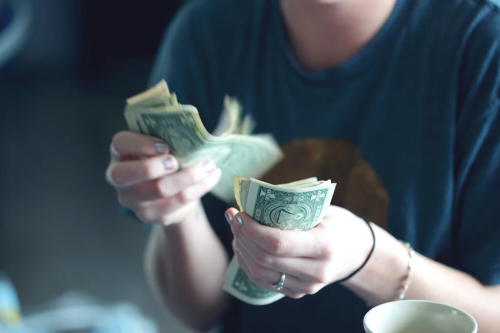Why You Should Avoid a Credit Card Cash Advance
Latoya Irby
The option to get cash from your credit card may sound tempting, especially if you’re low on cash, but a cash advance is not the same as withdrawing cash using your debit card. In reality, credit card cash advances are loans and as such, are expensive and can easily lead to credit card debt.
Using your credit card to withdraw cash from an ATM, using one of the card issuer-supplied convenience checks, and using your credit card overdraft protection are ways your credit card issuer makes cash available to you. It might be easy to take out a cash advance from your credit limit, but you should avoid doing so unless it's an extreme emergency – say, a dental emergency.
Why Credit Card Cash Advances Are So Expensive
Cash advances are one of the most expensive types of credit card transactions. That’s because they’re priced differently than other purchases, including balance transfers.
Consider the following:

Cash Advance Fees: Cash advances are charged a cash advance fee that’s either a minimum flat rate or a percentage of the amount of the cash advance. For example, the credit card terms may state the cash advance fee is $5 or 5 percent, whichever is greater. Under these terms, the fee on a $150 cash advance would be $7.50, which is 5 percent of the advance amount.
Cash advance fees typically range from 2 percent to 5 percent of the cash advance amount, with most credit cards charging on the higher end.
ATM Fees: In addition to the cash advance fee, you’ll also be charged an ATM fee, between $2 and $5, depending on which bank’s ATM you use. The ATM operator and your credit card issuer may both charge an ATM fee.
Higher Interest: Cash advances almost always have a higher interest rate than the rate for purchases and even balance transfers. Assuming you paid each balance within the same amount of time, you would pay more interest on a $500 cash advance than on a $500 plane ticket, for example. The longer it takes you to pay off a cash advance, the more interest you’ll accrue and, consequently have to pay.
No Grace Period: Most credit cards don’t offer a grace period on cash advances. That means you don’t get a full billing cycle to pay off the full amount due – thus, avoiding a finance charge. Interest starts accruing from the date the transaction clears your credit card account. One tip is to not wait until your bill arrives in the mail or your inbox to pay off the balance if you want to minimize the interest you’ll pay. If that’s the only balance on your credit card, pay it off as soon as possible.
Payment Allocation Rules: Federal law requires credit card issuers to apply the minimum payment to balances with the highest interest rate. But, anything above the minimum, credit card issuers can apply whatever they want. Often, payments above the minimum are applied to the lowest interest rate balance which means it takes longer to pay off a cash advance balance. And, taking longer to pay means you'll pay more in the long run.
You Could Have a Bigger Cash Flow Problem
If you need to take out a cash advance, it’s likely you have a pretty big financial problem. Ideally, you should have enough income to meet all your financial obligations. And, if you don’t have enough money to pay your basic bills and necessary expenses like rent and utilities, how will you have enough money to pay your credit card bill when it comes?
People who take out cash advances are more likely to default on their credit card debt than people who do not. That’s part of the reason that interest rates on cash advances are higher. It also means you’re at risk of falling behind on your credit card payments if you have to take out a cash advance.
If you find that you’re frequently using cash advances to pay for things – especially essentials like groceries – it’s time to take a closer look at your budget and spending and make efforts to align the two.








